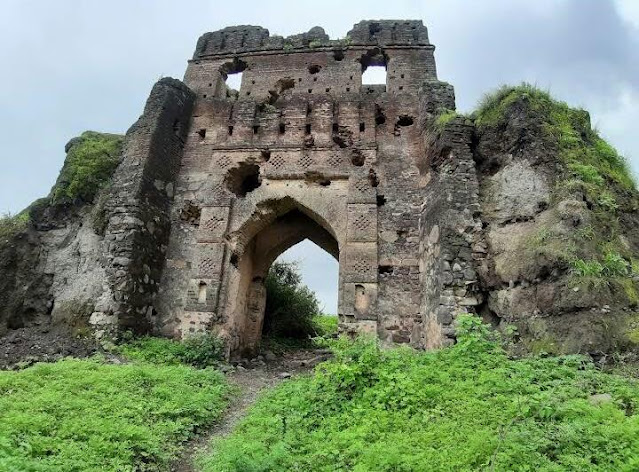Kuno
National Park – The National Park
The national park is situated in an isolated hill, sloping in all directions. The national park covers an area of about 344.686 km2 out of which 313.984 km2 is forest
land and 30.702 km2 is revenue land in the Sheopur and Vijapur tehsils of
Sheopur district. The national park is situated almost in the centre of Kuno
Wildlife Division of Sheopur district, and it is a part of the central Indian
Vindhyan hills. The Kuno Wildlife Division has a total area of 1235 km2. The national park is in the shape of a leaf with Kuno river forming the main centre
spine. The Kuno river, a tributary of River Chambal, vertically bisects the
sanctuary from north to south.

It
occupies an area of 5.90 km2 in the sanctuary. A number of major of major
nallahs like Lankahkhoh, Kudikheda, Durredi, Aamkhoh originate from the gorges
located on the west, join the Kuno river. Similarly, the Dabhona nallah,
Naharkunda nallah, Gangoli nallah etc. originating from the eastern khohs, meet
the Kuno river at various sites. The national park falls in the semi-arid zone
and has a typical terrain of central Indian highlands, interspersed with
woodlands and meadows. This park is situated at 180 meters at its lowest and
500 meters above mean sea level at its highest point. The best time to visit
this national park is between October and March.
Flora:
The national park falls under the Kathiawar-Gir dry deciduous forest eco-region.
The park comprises of northern tropical dry deciduous forests, southern
tropical dry deciduous forest, dry savannah forest & grassland, tropical
riverine forest, northern tropical thorn forest and ravine thorn forest. The park is home to around 123 species of trees, 71 species of shrubs, 32
species of climbers & exotic species and 34 species of bamboos & grasses.

The
dominant tree species found in this park are Acacia catechu, Salai Boswellia
serrata, Tendu Diospyros melanoxylon, Palash Butea monosperma,
Dhok Anogeissus latifolia, Acacia leucophloea, Ziziphus
mauritiana and Ziziphus xylopyrus. The prominent shrub species found in the park are Grewia flavescens, Helicteres
isora, Hopbush viscosa, and Vitex negundo. The grass species
found in the park are Heteropogon contortus, Apluda mutica, Aristida hystrix,
Themeda quadrivalvis, Cenchrus ciliaris and Desmostachya bipinnata. Senna
tora and Argemone mexicana are also common.
Fauna:
The park
is home to 33 species of mammals, 14 species of fish, 33 species of reptiles
and 10 species of amphibians. The mammals found in the park are tiger, Indian
leopard, Southeast African cheetah, jungle cat, desert cat, sloth
bear, dhole, Indian wolf, Indian jackal, striped hyena, Bengal
fox, jackal, chital, sambar, nilgai, chausingha, barking deer,
gaur, chinkara, blackbuck, wild boar, Indian grey mongoose, ruddy
mongoose, small Indian mongoose, ruddy mongoose, honey
badger, gray langur, Indian crested porcupine, Indian gerbil, Indian
tree shrew, rhesus monkey and Indian hare.

A feral zebu
herd was initiated at this park. The cattle were set free in the
sanctuary to act as an attractant for the critically endangered Asiatic
lion. More than 1,900 feral zebu cattle were estimated to occur
in 2008, whereas density of wild ungulates was considered too low to sustain an
introduced lion population at the time. The reptiles found in the park are mugger
crocodile, gharial, Bengal monitor and Indian softshell turtle.
Avifauna:
The park
is home to around 206 species of birds. The birds found in the park are Indian
white-backed vulture, long-billed vulture, red-headed vulture, Egyptian
vulture, crested serpent-eagle, short-toed snake
eagle, Bonelli's eagle, white-eyed buzzard, changeable hawk-eagle, brown
fish owl, spotted owlet, Western marsh-harrier, pied harrier, Montagu's
harrier, steppe eagle, osprey, common kestrel, short-eared owl, Demoiselle
crane, common crane, black-winged kite, painted spurfowl, ruddy
shelduck, Indian peafowl, grey francolin, Eurasian
nightjar, jungle nightjar, Indian nightjar, painted sandgrouse, woolly-necked
stork, great stone-curlew, Sirkeer malkoha, Indian golden
oriole, black-rumped flameback, bay-backed
shrike and Indian paradise flycatcher.




.jpg)





.jpg)
.jpg)




.jpg)

.jpg)
.jpg)

.jpg)
.jpg)

















